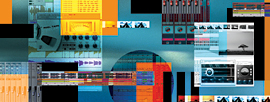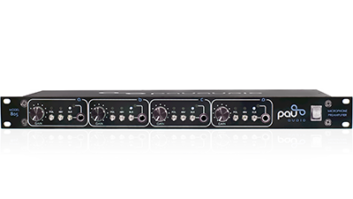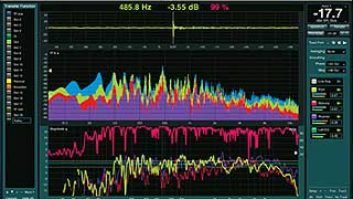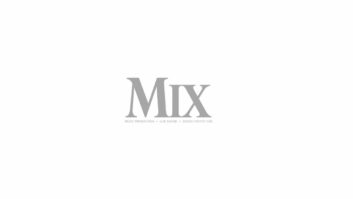
The digital audio workstation remains right at the heart of music production. Given the fast-moving world of DAW design, we felt a review of upgrades in these programs (since last fall’s AES) was in order. To offer a manageable list, the software included is limited to systems with the ability to record/play multichannel audio for music production. A few players reported no major updates since AES, but are nonetheless worthy of checking out if you’re shopping for a new DAW. These include BIAS Deck (www.bias-inc.com), Mackie Traktion (www.mackie.com), Steinberg Nuendo (www.steinberg.net) and Sony Acid (www.sonycreativesoftware.com).
Ableton (www.ableton.com) Live is now up to Live 7.0.7. This platform includes the Live 7 Suite, which bundles Live 7 with multiple instruments and entry-level Live 7 LE. Live has added control surface support for the Akai MPD24, support for dynamic adjustment of the Audio Units plug-in buffer size and improvements for setting up a Library when starting Live without one. On Mac OS X, Live now supports up to 256 input and output mono channels of the selected audio device.
Adobe (www.adobe.com) added features for its PC-based Audition 3, including enhanced spectral editing, which allows making a free-form selection in frequency space with the Effects Paintbrush and applying effects to that selection. A Healing Brush function lets users smooth over a selected region to repair clicks, pops and other noises automatically. Among other upgrades are improved multitrack editing, new effects — including convolution reverb, delay, mastering tools and tube-modeled compressor — and iZotope’s Radius time stretching for altering tempo without changing pitch.
After a monster upgrade with Logic Pro 8 — sporting a redesigned interface and bundling Soundtrack Pro 2, Studio Instruments, Studio Effects/Studio Sound Library and MainStage — Apple (www.apple.com) has been low-key with Logic, but several fixes are reflected in Logic Pro 8.0.2. Chief among them are improvements in integration with third-party control surfaces for better performance (especially with Euphonix surfaces) and proper outline colorization of inactive regions within the Take folder. In addition, key commands are reassigned so as not to compete with Leopard shortcuts.
Offered as freeware (or $19 with the optional Multi-Audio accessory), Anvil Studio (www.anvilstudio.com) offers a cost-effective DAW option for Windows Vista (32-bit)/XP/2000/ME/98/95. The record/mix platform has introduced several bug fixes, including the ability to use automation to dynamically adjust the tempo of the song using the Pro-Mix accessory and improved MIDI master/slave synchronization.
Audacity (audacity.sourceforge.net), the free open-source Mac/PC/Linux/Unix DAW, has some improvements to its Audacity recording platform. Chief among them are a new Vocal Remover plug-in and improved scaling and layout for rulers and VU meters in the interface.
Cakewalk (www.cakewalk.com) continues to enhance its PC-based SONAR 7 Producer Edition. The step sequencer can now save and load SONAR Step-Sequencer pattern files and has new mouse gestures to edit velocities in the Steps pane. It can also change/set default velocity of new steps, accepts step record from MIDI devices and can preserve patterns when changing step sizes. It also offers tight integration with all Euphonix control surfaces and improved Active Controller Technology support for the Edirol PCR-M Series and the RSS V-Mixing System via the proprietary SONAR REAC driver for sending 40 channels of audio via a Cat-5e Ethernet cable or fiber optic.
Digidesign (www.digidesign.com) has made two significant additions to Pro Tools 7.4 (which includes Pro Tools HD, Pro Tools LE and Pro Tools M-Powered). Elastic Time lets users change the tempo and timing of loops, music, dialog and other sound files with simplified auditioning of loops and audio files in sync with the session tempo. Additionally, 7.4 has new/expanded Avid video workflows, including support for the upcoming Media Station|PT 2.7 with video satellite option. Expanded integration with Avid Interplay is also standard, as is support for media streaming from Avid Unity ISIS shared storage networks (Windows XP only), support for Avid Mojo and Avid Mojo SDI video interfaces on Intel-based Macs, and tri-level sync compatibility with Sync HD.
Changes with FASoft‘s (www.ntrack.com) n-Track Studio start with a Signal Path view, a real-time representation of the routing of audio signals in the audio engine. The addition of RMS level meters with RMS+Peak option and support for K-System metering allow for more accurate metering of audio loudness using Bob Katz’s K-System. Also included is support for the Wave64 file format, including WAV files beyond the 2GB limitation, using either .wav or .w64 extensions.
Image Line Software continues to lavish attention on its FL Studio 8 (www.flstudio.com) Windows-based DAW. Improvements include the Slicex drum loop-slicing generator plug-in and the SynthMaker fully modular environment. Support of MIDI SysEx input and handling of basic MMC functions has also arrived, as has full Mackie Control Universal support.
At M-Audio (www.m-audio.com), the DAW-in-residence is Pro Tools M-Powered V. 7.4. As with Digidesign Pro Tools, one of the most significant additions is Elastic Time (described above). For users running Windows Vista Ultimate or Business, Pro Tools M-Powered 7.4 provides new support for both Microsoft platforms (32-bit only) in addition to its current Windows XP and Mac OS 10.4.9 support.
Magix‘s Samplitude 10.1 and Sequoia 10.1 (www.samplitude.com) offer improved automation functionality and updated program help for Frontier, JLCooper, Logic, Mackie, PreSonus and Tascam hardware controller setup. Sidechaining is now available for the vocoder, and MIDI editor step recording can now occur via keyboard or MIDI entry. File handling/import/export also has increased versatility.
The Merging (www.merging.com) Pyramix Native V6 is the fully functional, software-only version of Pyramix that’s configurable from 24 to 96 tracks — boosted now to include up to 96 I/O capability and up to 192kHz sample rate. All main Pyramix options are now configurable in Native. Pyramix MassCore V6 is configurable from 16 to 384 inputs and output channels (768 I/Os) in a single system, with up to 256 buses user-configurable as mix/sub/aux/returns. New features include MassCore Technology with a new surround monitor section, full support of VST with automation and enhanced support for interchange formats such as OMF, AAF with MXF, XML and Final Cut Pro XML.
News from MOTU (www.motu.com) comes via Version 6 of its Digital Performer software. New features include a user interface redesign, a CPU-efficient ProVerb convolution reverb plug-in, the MasterWorks Leveler limiting amplifier plug and six new virtual instruments. Also included is XML file interchange with Final Cut Pro, track comping, support for interleaved broadcast WAV audio files, enhanced support for operation as a software front end for Pro Tools HD systems, prerendering of virtual instruments, the ability to “bounce and burn” directly to an audio CD and numerous other productivity enhancements.
PowerTracks Pro Audio from PG Music (www.pgmusic.com) has added Audio Chord Wizard 2, which figures out the chords from any audio CD track, MP3, WAV, or WMA (Windows Media Audio) file and writes the results in PowerTracks’ chords window.
RML Labs remains sharp with its SAWStudio (www.sawstudio.com) Basic, Lite and Full — now at V. 4.2. Among the updates to this PC-based DAW are enhanced MIDI Controller API functions to handle the Frontier AlphaTrack’s special functions. Sample Edit mode in the SoundFile view has been modified to switch samples at the midpoint between samples instead of at the start of each sample, making Sample Edit control much easier when the user is modifying sample values. The DAW’s Video Track Viewer 3 now has added compatibility for some HD MP4 formats and extended compatibility for more MPEG and QuickTime formats.
Digital converter specialist Prism Sound made many changes with its acquisition of SADiE (www.sadie.com), resulting in the current SADiE Series 5 package. Integration with other manufacturers’ equipment has been thoroughly addressed, so SADiE can easily transfer between OMF, AES-31 and AAF into its own EDL format, and can now import/export MP2 and MP3 files. as well as record/replay from Mac-formatted drives. The integrated PQ editor, integral to CD creation, has been enhanced: DDPi creation, along with CD text, can now be done directly from the playlist. Waveforms are now automatically created as material is recorded, allowing for editing while recording; more customizable functions and hot-keys bring virtually every single function within the SADiE system under user-definable control.
Sonic Studio (www.sonicstudio.com) cuts in with soundBlade V. 1.2.2. iZotope’s MBIT+ redithering and support for AIFC import has been added as part of the base package, User interface and functionality improvements have been made to the QuickTime Interlock option. Sonic EQ LE, a free version of Sonic Studio’s minimal-phase equalization, has also been added as part of the base soundBlade package, and the Quartet DynPEQ option — a dynamic equalizer plug-in for soundBlade from Wholegrain Digital Systems — is now shipping. DSD Import has been announced, and export of LPCM files as DSD data is supported.
Released this month are Steinberg‘s (www.steinberg.net) Cubase 4.5 Essential and Cubase 4.5 Studio. New features include improved support for Yamaha Motif XS and the KX USB Music Studio Series, 45 new acoustic instruments for HALion One by Sonic Reality (including the Yamaha S90 Grand), 250 new drum loops by Big Fish, and Sequel V. 2 Project Import and Sequel V. 2 Content Pack compatibility. The flagship Cubase 4.5 offers seamless integration with the new Steinberg hardware MR816 CSX and MR816 X Advanced Integration DSP Studio, CC121 Advanced Integration Controller. Sequel 2, an update of Steinberg’s new software app for music creation and live performance just released last year, offers a range of new features including Track Freeze, hardware controller Learn mode, track icons and more.
Orion 7.5 from Synapse Audio Software (www.synapse-audio.com) now has a new audio engine boasting double-fast operation on processors with multiple cores. Other new features include Windows Vista compatibility, enhanced workflow and interface design, updated VST implementation to V. 2.4 and a new limiter effect modeled after the 1176LN.
David Weiss is Mix‘s New York editor.




